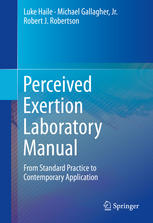

Most ebook files are in PDF format, so you can easily read them using various software such as Foxit Reader or directly on the Google Chrome browser.
Some ebook files are released by publishers in other formats such as .awz, .mobi, .epub, .fb2, etc. You may need to install specific software to read these formats on mobile/PC, such as Calibre.
Please read the tutorial at this link: https://ebookbell.com/faq
We offer FREE conversion to the popular formats you request; however, this may take some time. Therefore, right after payment, please email us, and we will try to provide the service as quickly as possible.
For some exceptional file formats or broken links (if any), please refrain from opening any disputes. Instead, email us first, and we will try to assist within a maximum of 6 hours.
EbookBell Team

5.0
50 reviews This manual provides laboratory-based learning experiences in perceptually and psychosocially linked exercise assessment, prescription, and programming. The primary pedagogic outcome is the ability to use applied theory and practice in perceptual and psychosocial exercise assessment and program design to promote the adoption and maintenance of a physically active lifestyle, enhancing overall health fitness. Perceptual and psychosocial variables are presented in individual, stand-alone laboratory modules that can supplement existing curricula such as exercise and sport psychology, exercise physiology, exercise testing and prescription, and exercise training and conditioning. In addition, the complete modular set has a conceptual flow that allows its presentation as an entire, laboratory-based course. The laboratory modules are divided into three primary units: assessment (theoretical constructs, scales and procedures, tests), prescription (self-regulation, performance), and program evaluation. The manual uses a unique format in which case studies are embedded in the conceptual flow of each lab module facilitating translation of laboratory results to real-world application. The manual concludes with a discussion of perceptually and psychosocially linked exercise prescription and programming applications in public health, such as program monitoring and adherence.